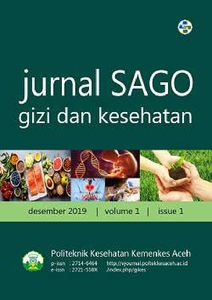Prastiwi, Audin and Astari, S.farm., M.Si, Chitra and Makkasau, Suhandra (2023) Uji Penetapan Kadar Asam Lemak Bebas Minyak Goreng Dari Kulit Ayam. Uji Penetapan Kadar Asam Lemak Bebas Minyak Goreng Dari Kulit Ayam, 4 (2). pp. 165-171. ISSN p-ISSN. 2714-6464 & e-ISSN. 2721-558X
![[img]](http://repository.umpalopo.ac.id/3807/1.hassmallThumbnailVersion/Dokumen-WPS%20Office_page-0001.jpg)
|
Image (Sampul Artikel)
Dokumen-WPS Office_page-0001.jpg - Cover Image Download (216kB) | Preview |
|
|
Text (Artikel)
1117-6916-3-PB.pdf - Published Version Download (312kB) |
||
|
Text (Turnitin)
turnitin jurnal.pdf - Supplemental Material Download (224kB) |
||
|
Other (Link Artikel/Jurnal/Riset)
1117 - Additional Metadata Download (39kB) |
Abstract
Background: Currently, the Indonesian people are shocked by the scarcity of cooking oil. Demand increases yearly along with the population, making cooking oil an important commodity and essential to the Indonesian economy. The composition of broiler chicken skin contains oil. If this oil is processed into cooking oil, it will be able to overcome environmental pollution so that the broiler fat skin waste has economic value. However, the feasibility of making it a substitute for packaged cooking oil is not yet known, so further research is needed to determine its safety and feasibility. Objectives: This study aims to determine the feasibility of cooking oil from chicken skin and the free fatty acid content of cooking oil from chicken skin. Methods: The research method was experimental. The research began with the purchase of chicken skin samples from the traditional Palopo City market. Furthermore, research was carried out at the Pharmacy Laboratory of Muhammmadiyah University of Palopo, which was carried out in 2022. The primary sample of this research is chicken skin. The sample was roasted in a pan until it released oil. Then standardization of 0,05 N NaOH solution was carried out, after which free fatty acid content was determined. Results: Organoleptical test results on the two different cooking oil samples showed differences in odor, color and pH. Furthermore, it was found that the effect caused by high fatty acid levels on the production feasibility standards of oil will produce rancidity in oil and increase cholesterol levels in oil. Conclusion: Cooking oil produced by chicken skin does not meet the standards for the feasibility of use. This is due to the value of the presentation of free fatty acids, and the acidity number does not meet the applicable cooking oil quality standards. Keywords Cooking oil, chicken skin, free fatty acids
| Item Type: | Article | |||||||||
|---|---|---|---|---|---|---|---|---|---|---|
| Contributors: |
|
|||||||||
| Uncontrolled Keywords: | Cooking oil, chicken skin, free fatty acids | |||||||||
| Subjects: | L Education > L Education (General) | |||||||||
| Divisions: | Fakultas Kesehatan > Farmasi | |||||||||
| Depositing User: | Prastiwi Audina 191320011 | |||||||||
| Date Deposited: | 10 Aug 2023 04:04 | |||||||||
| Last Modified: | 10 Aug 2023 04:04 | |||||||||
| URI: | http://repository.umpalopo.ac.id/id/eprint/3807 |
Actions (login required)
 |
View Item |


